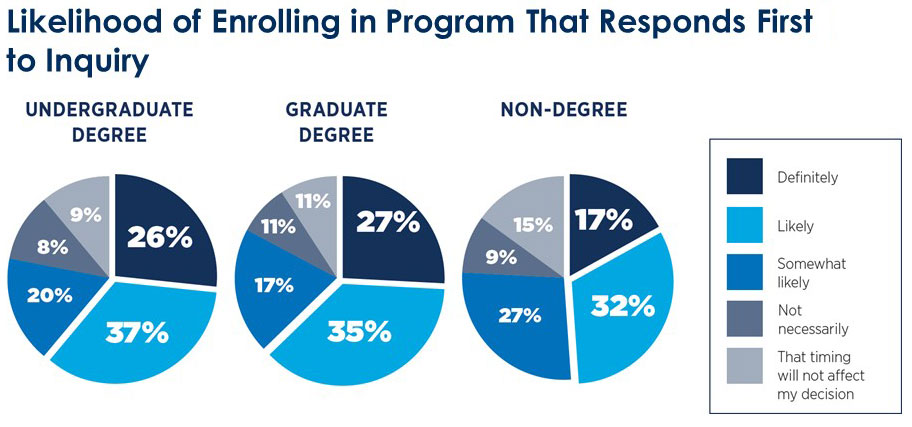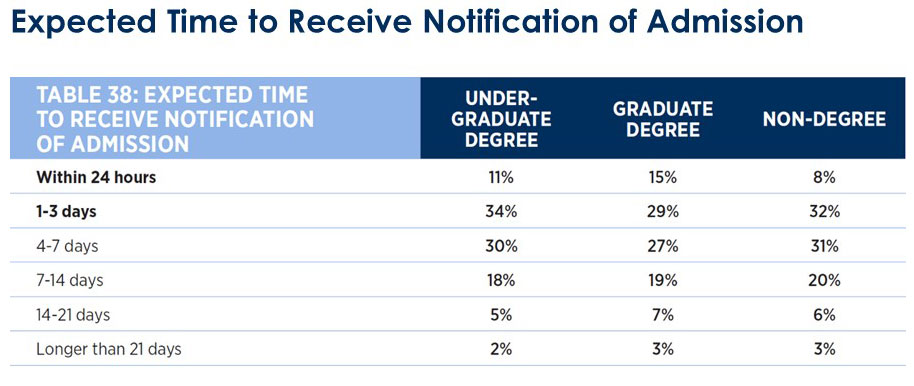enrollment
The Difference Between Growth and Contraction: Meeting the Market Where It Is

Someone asked me what was the most important thing I recommend to my consulting clients. The answer was clear: Institutions need to stop thinking that students should meet them where we are and instead adjust to meet students where they are.
This may sound simple, but higher education—and in particular graduate education—has been guilty of ignoring market trends and expectations, and then applying engagement and communication strategies that fit the academic environment rather than the needs and demands of prospective students.
Graduate and online enrollment are the only growth areas in higher education for the foreseeable future (and competition increases for these students), and as such schools need to be responsive to what resonates with, influences, and affects the enrollment choices of these students. Why? Because these factors will help decide if the student chooses your institution or some other institution.
Day to day experiences are not only molding but constantly changing student expectations. My colleagues and I call this the “Starbucks, Amazon, and Netflix Effect.” These (and other) companies have caused the market to see everything as a commodity—including higher education. They have created a buying environment that is personalized and authentic—quickly presenting buyers with what they want, but also preemptively highlighting items the individual did not even know they wanted or needed. People are provided with everything at a moment’s notice in a modality that is easy, quick, and seamless.
Prospective students expect personalization, authenticity, and speed
The key characteristics that today’s students have come to expect of the institutions and programs that interest them are what I would call above-and-beyond personalization, authenticity, and speed. Their experiences with Amazon, Starbucks, and Netflix provide them with what they requested in a moment’s notice. Packages are purchased and delivered within hours, coffee is ordered and ready within minutes, you are greeted by name when you pick up your cup, a movie is selected and available within seconds, and so on. Prospective graduate and online students expect the same from colleges and universities. In fact, our 2022 research indicate that timely response is a hugely important factor in the enrollment decision, with more than 60 percent of graduate and online students indicating that they are likely to enroll at the institution that first responds to their RFI (request for information) submission.

This is staggering, but not surprising considering their buying experience(s) across other areas in their lives. You need to realize that if you are not the first to respond to their inquiry, the resources expended to generate leads will be wasted in part because you will be left with less than 40 percent of your inquiry/lead pool still viable. This applies tremendous pressure on the funnel to convert at far higher rates in order to achieve your enrollment and revenue goals. The old adage “speed-to-lead” rings true and LOUDLY.
Imagine just being able to capture the 25 percent who indicate that they will “definitely” enroll at the first institution that responds. Institutions could see immediate lift in their funnels and enrollment solely by improving their response rates/times to inquiries as they are submitted. Many RNL partners lean on us to help with timely response because they do not have the bandwidth or the infrastructure to meet these expectations. This is one of those areas where it may be better to outsource than have to make the investment to become what is essentially a call center. The expectation for speed does not end at the inquiry stage. Today’s students also expect an admissions timeline that is hard for many institutions to contemplate. Our 2021 graduate student research and our 2022 online student research both indicate that upwards of 70 percent expect an admissions decision within a week.

One final statistic from our latest research make taking on the challenge of reducing the admissions timeline essential to enrollment health: more than 80 percent of graduate and online students enroll at the institution that first admits them to their program of interest. For those of you taking weeks to admit a student once they submit a completed application, this should scare you! Imagine if enrollment growth relied on less than 20 percent of your admit pool.
It’s critical to align your student interactions with their expectations
In order to survive in today’s market, your institution needs to adapt to the expectations students now have because of their interactions with other business and organizations. Speed is the key initial element that will provide you with the opportunity to be competitive. Effective and personalized engagement will also be very important, but without expediency universities will continue to position themselves at a disadvantage.
Unfortunately, many schools do not have the ability to currently meet those needs. RNL partners with schools to build these capabilities, and we would be happy to walk through how you can best achieve expediency in order to realize optimized enrollment and revenue growth. Reach out to our graduate and online experts and we’ll set up a time to talk.
Talk with our graduate and online enrollment experts
Ask for a free consultation with us. We’ll help you assess your market and develop the optimal strategies for your prospective graduate students and online learners.